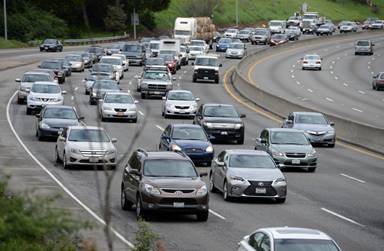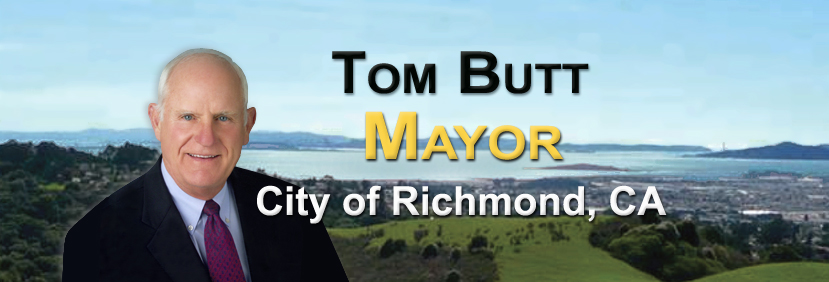|
| Click here: http://www.eastbaytimes.com/2017/03/15/everyone-agrees-freeway-cameras-help-reduce-shootings-paying-for-them-is-another-matter/.
Most agree freeway cameras can help prevent shootings, paying for them is another matter

Traffic flows along Interstate 80 near the San Pablo Dam Road overcrossing in San Pablo, Calif., on Thursday, March 10, 2016. There have been 80 shootings on Bay Area freeways since fall 2015, many of them along Interstate 80 and Highway 4. (Kristopher Skinner/Bay Area News Group)
By Karina Ioffee | kioffee@bayareanewsgroup.com |
PUBLISHED: March 15, 2017 at 2:42 pm | UPDATED: March 15, 2017 at 6:21 pm
For close to a year, a team of attorneys, police officers and even the FBI has worked to create a wireless system of cameras and license plate readers that could be activated any time there is a freeway shooting, a growing and deadly problem in the East Bay.
The proposed network, which would be located in freeway hot spots between Richmond and Antioch, is ready to go. There’s just one small problem. There isn’t any money to fund it.
There have been 80 freeway shootings in the East Bay since fall 2015, most concentrated along the Interstate 80 freeway between Pinole and Berkeley, and along Highway 4 in Pittsburg and Antioch.
Contra Costa politicians, like Hercules Councilman Dan Romero and Richmond Mayor Tom Butt, say the state should pay for the cameras because the roads are state property. But neither the governor nor state agencies like Caltrans and the California State Transportation Agency have so far been willing to commit resources, frustrating local leaders.
“People are traveling in an unsafe environment, and the state doesn’t want to do anything about it,” said Romero. “Somebody is going to lose a child — an innocent bystander — if this continues.”
Last Thursday, a 24-year-old man and a young woman were shot during rush hour traffic on I-80 near Richmond. The young man, a college student, later died. The incident tied up traffic for hours as cars were diverted to city streets. So far this year, there have been at least 10 freeway shootings, resulting in two deaths, according to the CHP. The shootings are unpredictable, and are often gang-related.
“Interstate 80 and Highway 4 have become a conduit for gang members in East and West Contra Costa, and they intentionally hunt each other on the freeways,” said Mary Knox, a deputy district attorney for the Contra Costa District Attorney’s Office who is part of task force searching for county, state and federal grants to pay for the wireless camera system.
Spurred by the growing problem, West County politicians traveled to Sacramento last summer to meet with Transportation Secretary Brian Kelly. During the meeting, Romero, then the mayor of Hercules, asked Kelly if he believed it was the state’s responsibility to keep state highways safe; Kelly said that it was, Romero and others recalled. Romero and others at the meeting took that to mean that help was coming.
“It sounded promising, but afterwards very little happened,” said San Pablo Mayor Rich Kinney, who was also in attendance. “I think the state fears opening the Pandora’s box, because once they give money to the Bay Area, you have to give to everyone.”
A spokeswoman for the California State Transportation Agency denied that any funding promises were made at the meeting, adding that Caltrans, CHP and local law enforcement agencies were still studying “the best course of action for the situation.” Attempts to speak with Secretary Kelly were not successful. Caltrans referred calls to the California Highway Patrol, which referred them to the state transportation agency.
The proposed wireless network, essentially a series of servers and sensors, would connect cameras, license plate readers and sensors set up at various points along the two highways. When a gun is fired, an alert would be sent to a command center, then cameras directed toward the direction of the gunfire to capture images of nearby cars, Knox said. Currently, Caltrans has live cameras positioned along all major Bay Area highways to monitor traffic, but they are not monitored for crime and do not record footage.
Not everyone thinks that an elaborate surveillance system is the best way to prevent more freeway shootings. Assemblyman Tony Thurmond, whose district includes Berkeley, Albany and West Contra Costa, said while shootings were “a serious issue,” programs and providers that work to prevent violence were equally, if not more, important.
“We don’t want to create any false hopes for people that if we put up cameras, there won’t be any more shootings,” Thurmond said, adding that his office was open to studying the issue. “At best, these cameras will get us information about the shooter, but I also want to see how we can prevent them.”
In the absence of traction from the state, some cities have taken matters into their own hands. San Pablo recently put cameras at two exits along I-80 on city property, and Pittsburg used $100,000 from its general fund, along with $200,000 in matching county funds, to set up cameras and license plate readers along its portion of Highway 4 last July. There have been six deaths from freeway shootings on Highway 4 in East Contra Costa County since June 2015.
Both say the cameras have been effective. Since being installed in Pittsburg, in the wake of several highway shootings last spring and summer, the license plate readers, which take a picture of all cars passing through Pittsburg, have been credited with helping recover 84 stolen cars and leading to 89 arrests, according to police Chief Brian Addington.
Yet Pittsburg’s situation is unique because it already had an estimated 150 cameras throughout the city, said City Manager Joe Sbranti. He estimated that adding the freeway cameras cost the city an estimated $50,000 a year, less than the average salary of one government employee.
Sbranti refused to say who should pay for additional highway cameras but added that his city could become a model for the state if it chose to invest in the crime-fighting technology.
Meanwhile, Knox and her team are continuing to research funding sources, which are coming in piecemeal. She estimates that $850,000 is needed to set up infrastructure, with additional costs for the license plate readers, although the final estimates will depend where and how many are installed.
“There is tremendous support for the project, and people understand that there’s an urgent need for it,” Knox said. “But it doesn’t seem to be a top priority for Sacramento. It is only a matter of time before a random shot ricochets and kills a commuter. The sooner this investigative technique is in place on the freeways, the sooner we can enhance public safety on our roadways.” |
|

